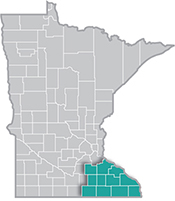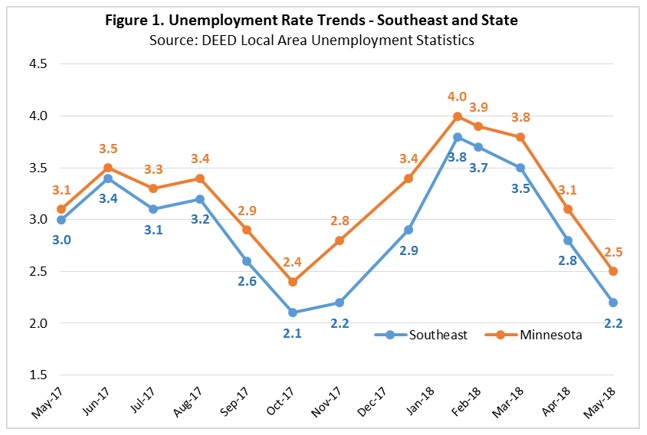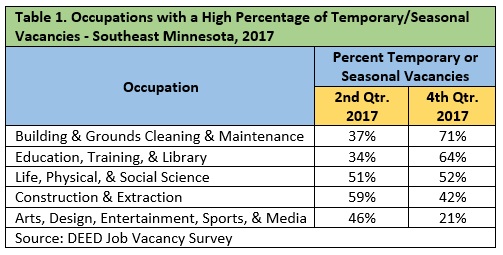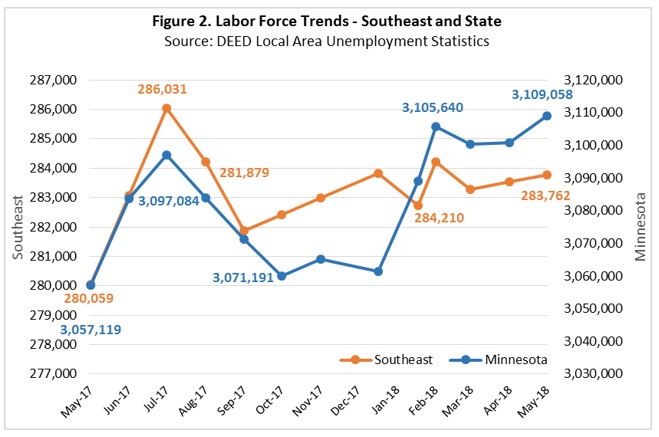 Southeast Minnesota is a health care and agricultural powerhouse. The region is home to the renowned Mayo Clinic and some of the world's most recognized food companies and brands.
Southeast Minnesota is a health care and agricultural powerhouse. The region is home to the renowned Mayo Clinic and some of the world's most recognized food companies and brands.
Advanced manufacturing is especially strong here, with machinery, chemicals, and electronics among the top products.
Want the freshest data delivered by email? Subscribe to our regional newsletters.
6/28/2018 5:00:00 PM
By now it’s obvious that the Southeast region is in the midst of a labor shortage, with a job seeker-to-vacancy ratio of 0.6 to 1 – for every 10 job openings there are only six unemployed people. This is the lowest of the six regions in the state, tied with the metro region.
The region’s unemployment rate has seen its share of ups and downs over the last year with rates ranging from a low of 2.1 percent in October 2017 to a high of 3.8 percent in February 2018, dropping to 2.2 percent in May 2018. This current unemployment rate is 0.8 points lower than the rate during May of last year, with the number of unemployed workers dropping from 8,384 in May 2017 to 6,326 in May of this year – a drop of 24.5 percent or over 2,050 unemployed individuals. The Southeast has seen a lower unemployment rate than the state as a whole during the last year, though the overall trend has been the same for both the region and the state as a whole (Figure 1).

The unemployment rate ups and downs can be partially explained by the temporary or seasonal nature of some occupations in the region. Table 1 shows that some occupational groups have experienced high percentages of temporary or seasonal job openings over the last year, such as construction and extraction or building and grounds cleaning positions.

According to data from DEED’s Quarterly Census of Employment and Wages program, job counts in the construction industry were lowest in the first quarter of the year when the weather isn’t suitable for this type of work, while education jobs were lowest during the third quarter – those late summer months when school is out of session.
Similarly, the labor force has experienced ebbs and flows over the past year with a peak of 286,031 available workers in June to a low of 280,059 workers in May. Despite one rather hefty overall decline during August and September 2017, the labor force has bounced back with a general increase since then, reaching the current labor force number of 283,762 workers in May 2018. However, the current estimate is still 0.8 percent lower than the peak, equaling about 2,270 fewer participants (Figure 2).

Employers reported 10,820 job vacancies in the fourth quarter of 2017 - the second highest number of openings the region has seen since the vacancy data became available in 2005. Couple that with a current unemployment rate of just 2.2 percent, which equals only about 6,325 unemployed individuals, and the numbers show just how dire the employment situation is in the region.
Contact Mark Schultz.